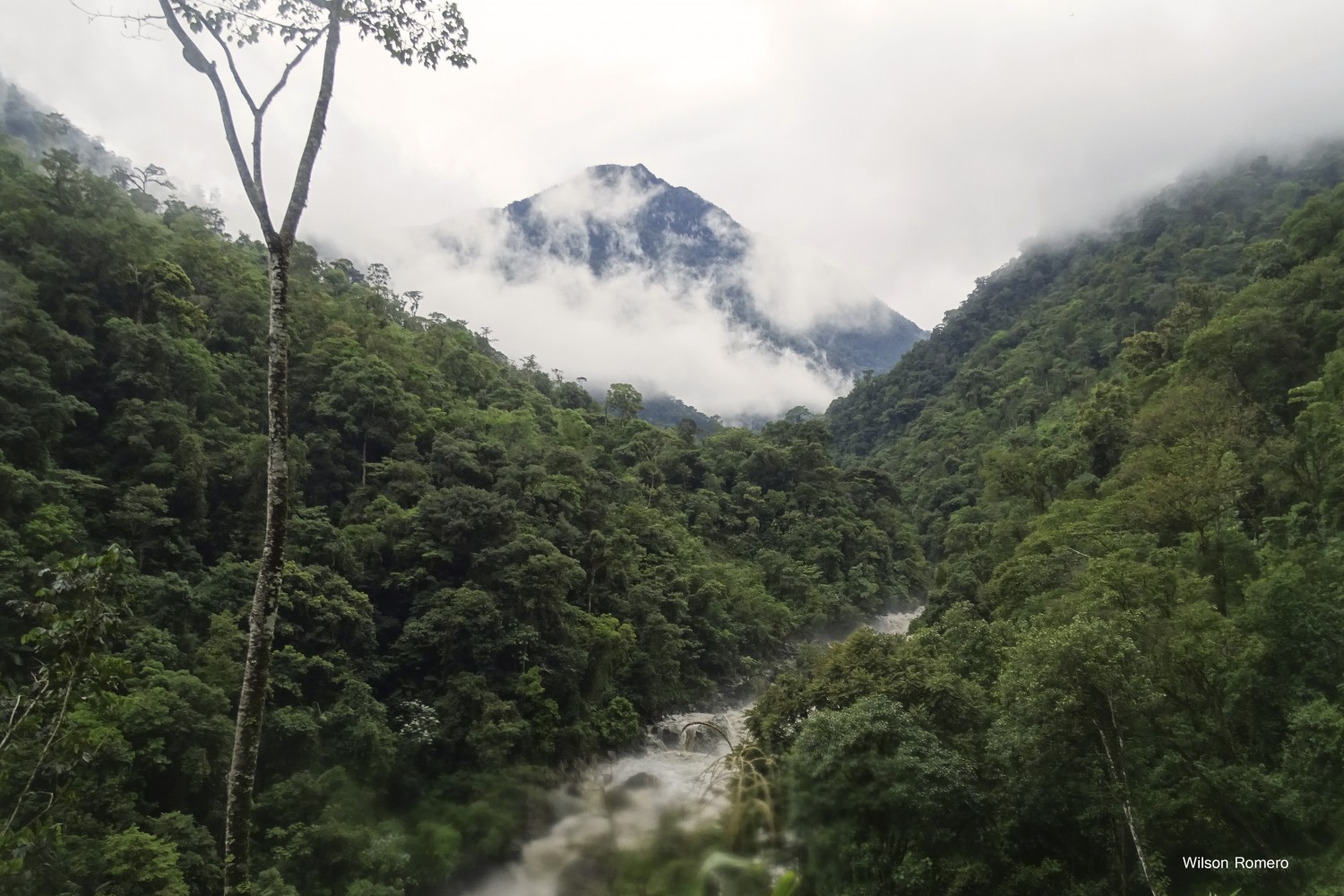Milestone National Park: A Critical Span In Ecuador’s 100-Mile Bridge of Protected Mountaintop Ecosystems
02/01/2018
Nature and Culture International plays leading role in creating “untouched” stronghold for spectacled bear and other threatened species.

Cheers erupted among the 600 attendees as Ecuador declared Río Negro – Sopladora National Park, Ecuador’s first national park in nearly a decade. Río Negro will eliminate a significant unprotected gap in the Sangay – Podocarpus Corridor, a 100-mile bridge of highly diverse and protected mountain ecosystems connecting Sangay and Podocarpus national parks.
 Río Negro – Sopladora National Park is in the eastern Andes of southern Ecuador.
Río Negro – Sopladora National Park is in the eastern Andes of southern Ecuador.
Río Negro’s new protections will establish uninterrupted habitat connectivity that is essential for the long-term survival of such far-ranging and charismatic species as the spectacled bear (globally threatened), Andean tapir (critically endangered within Ecuador) and Andean condor (critically endangered within Ecuador). The park is also rich in flora and fauna and its remarkably pristine ecosystems remain almost entirely intact and free from human intervention.
Nature and Culture International provided a leading and essential role throughout the seven-year process of establishing Río Negro – Sopladora National Park. Nature & Culture worked with municipal governments, the Ministry of Environment, and local communities to secure community and political support. Nature & Culture also carried out a Rapid Biological Assessment showing this 75,654-acre region of páramo and cloud forest ecosystems to be unique for its biodiversity and endemism, and also for having dramatic altitude changes over short distances. These dramatic altitude gradients encourage the evolution of diverse species and provide what some have called a critical “escape valve” for climate change – an upward migration path to cooler temperatures to help species survive as the Earth warms.
 The amethyst-throated sunangel (Heliangelus amethysticollis) is one of the 136 species of birds recorded in the Rapid Biological Assessment.
The amethyst-throated sunangel (Heliangelus amethysticollis) is one of the 136 species of birds recorded in the Rapid Biological Assessment.
“This is a historic milestone,” said Tarsicio Granizo, Ecuador´s Minister of Environment, at the formal declaration ceremony in Macas. “Creating [this] National Park is a serious matter of great importance and responsibility for current and future generations.”
Nature & Culture’s Rapid Biological Assessment in 2017 registered 546 species of plants, birds, amphibians, reptiles and mammals in the area, including threatened and uncommon species, and high levels of endemism. Among the species registered, there are three entirely new species of amphibians – a frog, a salamander, and a caecilian (a type of limbless serpentine amphibian). The study, conducted in a few days and under poor weather conditions, reflects only a small portion of the National Park’s expected biodiversity.
 Newly discovered Bolitoglossa sp.
Newly discovered Bolitoglossa sp.
In addition to the area’s biodiversity, Roberto Villarreal, mayor of Morona Canton, recognizes the National Park as a critical source of water. “We are aware of the importance of this natural area since it will benefit the neighboring communities and guarantee water for various hydroelectric projects, namely Paute Integral and San Bartolo,” said Roberto Villarreal.
Conservation of the region will also contribute to the local and global efforts aimed at mitigating and adapting to climate change.
Renzo Paladines, Nature & Culture’s Executive Director of Latin America, said, “This new National Park is one of the most important results of the long and fruitful collaboration between the Ministry of Environment, Nature & Culture and the local communities and authorities in conserving the Sangay – Podocarpus Corridor, one of the most biodiverse areas on the planet.”
Río Negro – Sopladora National Park would not have been possible without the generous financial support of the Andes Amazon Fund and the Bobolink Foundation.
To read the Press Release click here: Milestone National Park: A Critical Span In Ecuador’s 100-Mile Bridge of Protected Mountaintop Ecosystems
To read more about the species found in this area click here. Please note the book is in Spanish with an English summary.
Check out the news posted on Mongabay and learn more!


